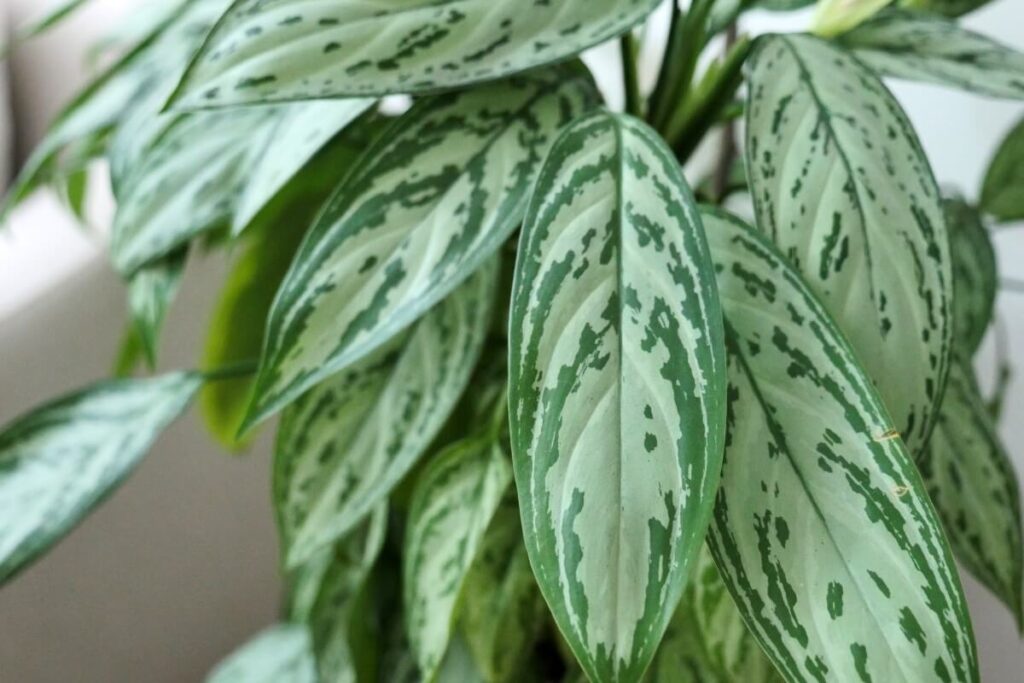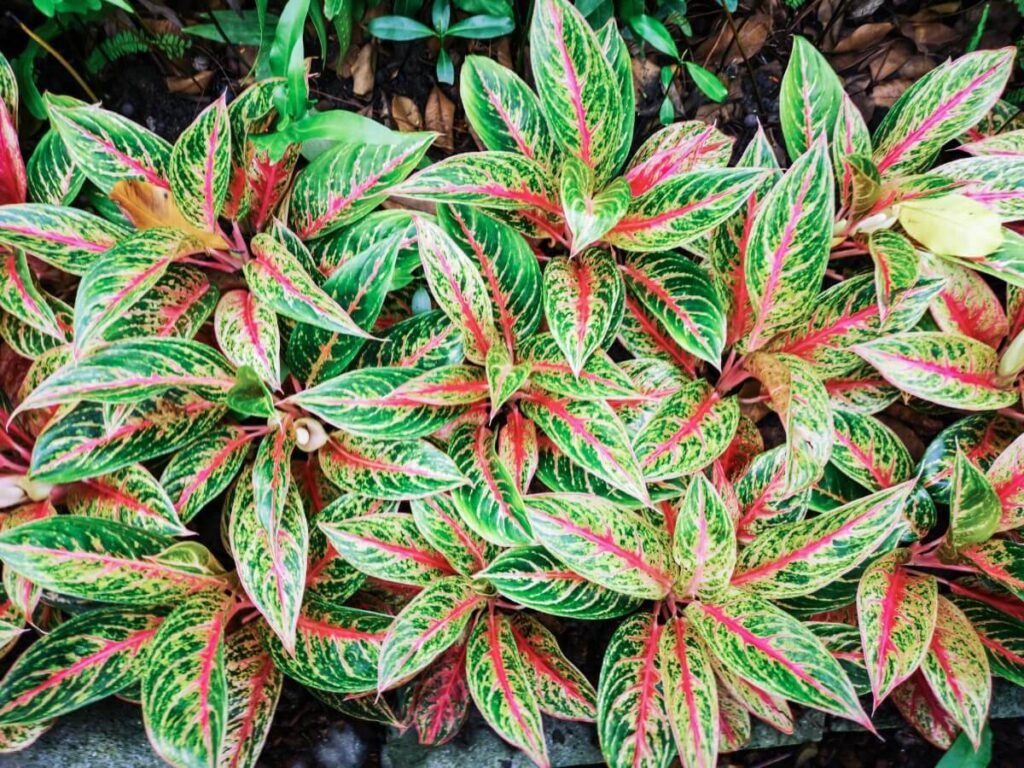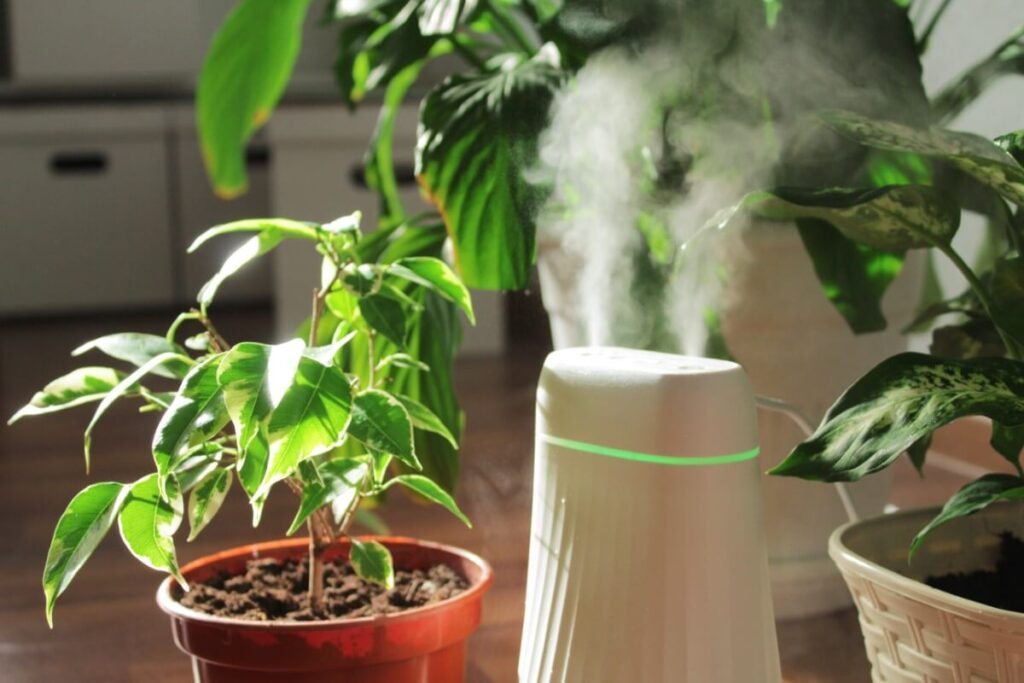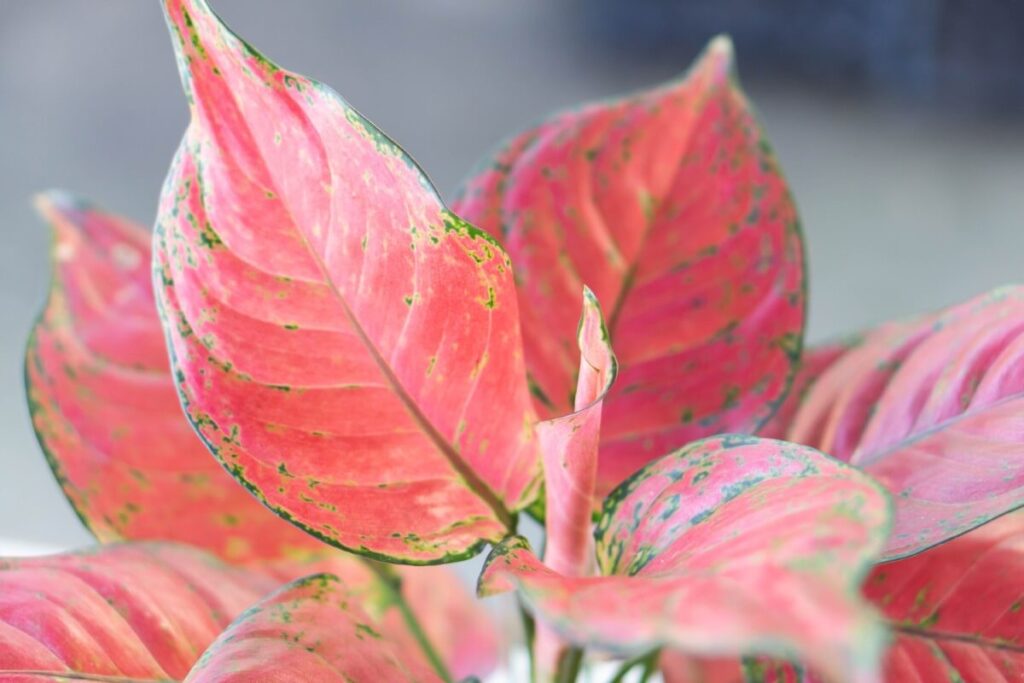Ideal Temperature and Humidity Ranges for Aglaonema (Chinese Evergreen) Plants to Thrive Indoors
Aglaonema plants, often known as Chinese evergreens, are prized for their striking foliage. Their leaves come in several shapes, colors and variegated patterns. Aglaonema foliage can range from green to yellow, red and even pink. Some varieties also have splashes of silver. Aglaonema plants come from tropical parts of Asia, mainly in China or the Philippines. Aglaonemas are fairly easy to grow, but they have some special temperature and humidity requirements that will be explored in detail in this essential guide.
Aglaonema plant temperature and humidity tolerances – the essentials
Aglaonema plants need warm, moist conditions to thrive. These tropical houseplants really can’t handle the cold. Anything below 60ºF (15ºC) will cause problems. Chinese evergreens do best in temperatures from 65ºF to 80ºF (18 to 26.5ºC). Aglaonema plants require 60 to 70% humidity.
Typical temperature and humidity ranges Aglaonema plants receive in their native habitats

Aglaonema plants are native to the tropical forests of Asia, particularly in parts of China and the Philippines. These forests create warm conditions with high humidity levels – perfect for Chinese evergreens. These habitats also provide plenty of shade and moist soil.
Wild Aglaonema plants absorb moisture from the air through their foliage. This means that humidity levels in an Aglaonema’s native habitat often rise above 70%. The tropical forests of this region typically experience temperatures somewhere between 68 to 84ºF (20 to 29ºC).
Although our homes can’t quite replicate these conditions, Chinese evergreens should be placed in the warmest location available. They also benefit from nearby humidifiers or regular misting to keep humidity high.
Signs that your Aglaonema plant is exposed to the wrong temperature and humidity

Depending on the conditions in your home, it can be difficult to provide the right temperature and humidity for Aglaonema plants. There are some signs to look for that indicate Aglaonema plants are not getting enough heat or moisture.
Curling leaves
One of the most obvious indications that these plants are not warm or humid enough is curling leaves. Curling leaves on an Aglaonema plant can be caused by insufficient humidity or temperature levels. This can also be a sign of overwatering or underwatering, but the feel of the soil can eliminate this possibility. If the soil feels slightly damp, the leaves curl due to lack of moisture and heat.
Falling leaves
Drooping leaves are another sign that an Aglaonema plant is too dry. Again, this can also mean overwatering or underwatering the plant, so check the soil as well. Watch for common aglaonema pests, insects and diseases that also cause the plant to show signs of weakness or poor health.
Signs of underwater
An underwater Aglaonema will also not get enough humidity. Common signs of waterlogging are crispy or brown leaf tips and yellowing leaves. When watering Aglaoneam plants, give them a quick mist as well.
Ideal temperature and humidity for Aglaonema plants

The ideal temperature levels for Aglaonema plants range from 65ºF to 80ºF. For most Aglaonema owners, the average household room temperature should be sufficient. If you live in a colder area, you will probably need to place your Chinese Evergreen in a conservatory if you can.
Aglaonema plants need high humidity levels – usually between 60 and 70%. Steamy bathrooms create the ideal conditions for these tropical houseplants. The humidity is naturally higher in a bathroom, especially when you have a shower. Make sure the temperature in your bathroom is high enough as well.
Thermometers and hydrometers can help you meet the temperature and humidity requirements for your Aglaonema plant. Before you bring home a Chinese evergreen, it is a good idea to test different places in your home. This will help you identify the ideal location for the Aglaonema plant.
Aglaonema plants are susceptible to cold drafts. This rules out window sills as a potential location as the plant will be subject to drafts. Avoid drafts from radiators, heaters or air conditioning units as this can make the air extremely dry. Areas with high foot traffic, such as doorways, also create drafts, making them unsuitable for Chinese evergreens.
Rooms facing east or south should help provide enough warmth for Aglaonema plants but can overpower the plant with too much bright, indirect light. Chinese evergreens prefer partially shadier conditions, so rooms facing east or west should provide a sweet spot between temperature and light. For more, see our in-depth guide to where to place aglaonema plants in the home.
How to increase the humidity in your home

If the typical humidity in your home is not high enough for Aglaonema plants, there are a few ways to increase it. One of the most common methods is to mist the leaves of Chinese evergreens. This may help but is not a permanent solution. Misting should be done once every other day, with a higher frequency during the summer.
One of the best ways to increase the humidity around Aglaonema plants is to use a humidifier. These can be purchased quite cheaply and are a better long-term solution. Electric humidifiers are usually the best option. Using a humidifier brings benefits to us as well.
When we talk about increasing humidity, we are basically trying to create a microclimate around tropical plants. A good way to do this is to group houseplants with similar moisture needs. As water evaporates from each plant, local humidity increases around the group. Try placing Aglaonema plants next to other tropical houseplants.
Another good way to increase humidity for Aglaonema plants is to use a stone tray. Fill a shallow tray with small stones and place the Aglaonema on top in its nursery. Then fill the tray with water, but make sure the water level stays below the pebbles. Over time, the water will evaporate and increase the humidity around the Chinese evergreen.
Humidity levels will naturally be higher in some rooms, such as bathrooms. Kitchens can also be quite humid. Put an Aglaonema plant in the bathroom to give it as much moisture as possible. Conservatories and sunrooms can also be good places as long as there are shaded corners for Aglaonema.
Ultimately, it will likely take a combination of these methods to provide the right humidity levels for Aglaonema plants.
(Editor’s Note: Petal Republic participates in partnership programs with Amazon and other merchants to help readers connect with relevant products and services we may recommend).
Care for Aglaonema plants during spring and summer

Aglaonema plants will enjoy warmer temperatures in the spring and summer. However, if you live in a dry region, the summer heat also makes it easier for these plants to become too dry. If you are growing Chinese evergreens, keeping the humidity up during hot weather is a big requirement.
Mist the plant more regularly and use pebble trays or humidifiers to maintain humidity. In areas that experience really high temperatures, it may be too hot for Aglaonema plants. Place Chinese evergreens in a shadier location to keep them from getting too hot.
Now is also the best season to consider fertilizing your aglaonema plants.
Care for Aglaonema plants during the winter
Winter poses two problems for Chinese evergreens. Not only does it get colder for the plants, but the winter air can also be quite dry. This is especially true when we use radiators and heaters in our homes.
Aglaonema plants will naturally go dormant during the winter, which means they should be watered less frequently. But they still need to be kept warm. Keep household temperatures at the right level and make sure to keep the Aglaonema plant away from cold drafts.
Frequently Asked Questions About Aglaonema Plant Temperature and Humidity Tolerances:
Can Aglaonema plants tolerate cold?
Aglaonema plants do not handle cold temperatures well. These tropical plants need to be kept warm, usually somewhere between 65ºF and 80ºF. Anything below 60ºF is too cold for them.
Can Aglaonema Plants Live Outdoors?
Aglaonema plants prefer shady, tropical conditions when growing outdoors. Most areas will not be able to provide enough heat, especially during the winter. It is possible to grow Chinese evergreens outdoors in humid, warm areas such as the southern states.
Do Aglaonema Plants Need Misting?
Aglaonema plants need high humidity levels to grow well. Misting Aglaonema plants is one of the easiest ways to increase humidity and should be done every two or three days. Fog more regularly during the summer.
Closing
Aglaonema plants are wonderful bushy houseplants that can brighten up any indoor space. Although Chinese evergreens are fairly easy to care for, they can be a bit picky about temperature and humidity. To keep these tropical beauties happy, give them temperatures from 65ºF to 80ºF. Aglaonema plants also need moist conditions – preferably somewhere between 60 and 70% humidity.
If you’re thinking of adding your next Aglaonema plant to your collection, see our in-depth guide to the best plant shops that supply Chinese Evergreens across the country.
 pyomn
pyomn



